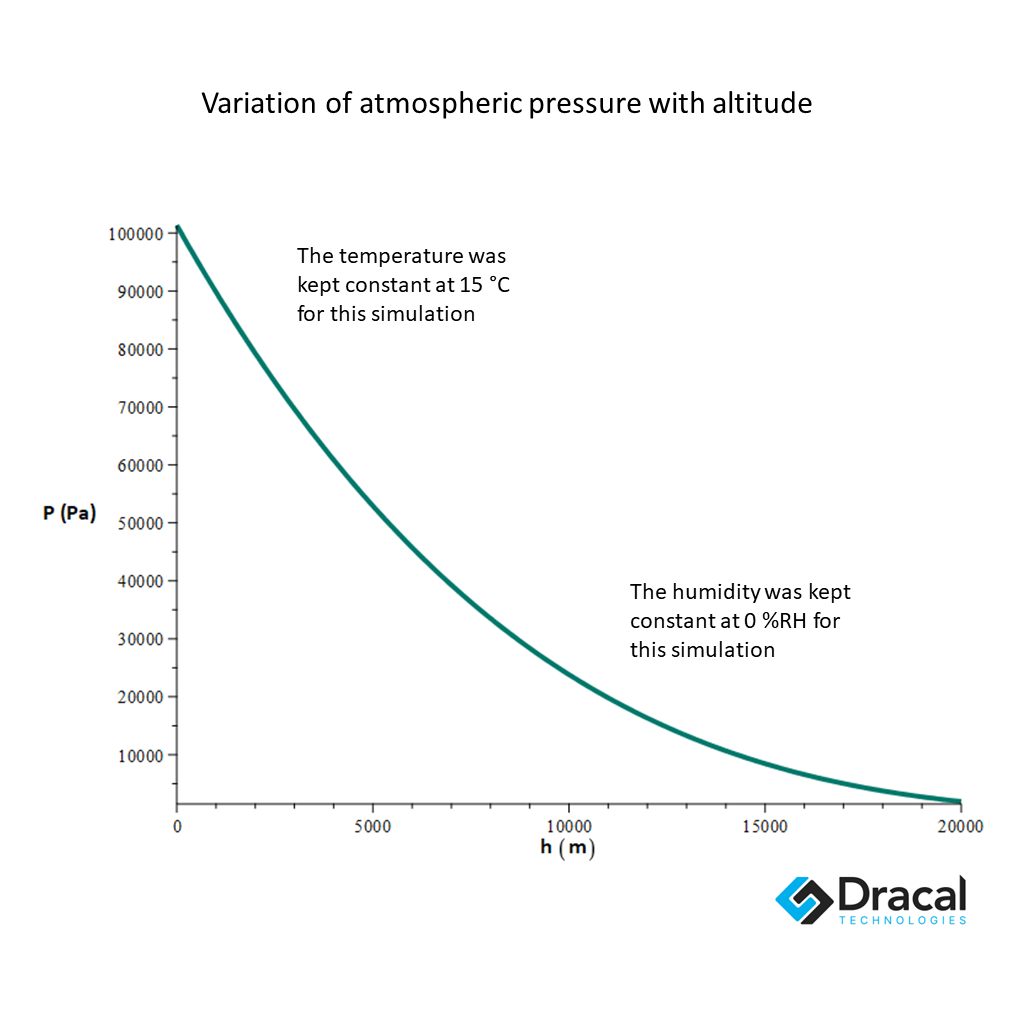Digital barometers

There are high-precision pressure sensors for all types of pressure: absolute pressure, gauge pressure, and differential pressure. For a short review of these concepts, you can take a look at the article on atmospheric pressure.
Here, we will focus on one example of a digital absolute pressure sensor: the precision barometer.
Atmospheric pressure sensor
Without going into the electrical circuits' details, a digital atmospheric pressure sensor comprises a pressure transducer and a voltmeter on a chip.
A pressure transducer consists of an element that reacts mechanically to atmospheric pressure and a converter that then translates this change in pressure into an electrical signal. The voltmeter finally measures the potential difference (in millivolts) associated with the change in pressure. Ideally, the pressure sensor chip incorporates components that compensate for, among other things, system temperature to achieve the best possible accuracy. Dracal Technologies' high-precision pressure sensors have a measurement uncertainty of 150 Pa, corresponding to 0.15% of normal atmospheric pressure.
Note: With an accuracy of 150 Pa, it is impossible to measure differential pressure in a negative pressure chamber, which is only 30 Pa less than usual. This is why a high-precision sensor for differential pressure is required in this case.
Atmospheric pressure and altitude
High-precision pressure sensors are now integrated into some aspects of daily life, such as mobile phones and smartwatches. For example, in combination with GPS, a precision barometer offers an excellent estimate of the topography of a place. How? Because atmospheric pressure varies with altitude.
This is also the property used by precision altimeters for aircraft. Atmospheric pressure does not vary linearly with altitude, but the mathematical conversion model is implemented in modern altimeters.

Using the altitude virtual channel
Q: The altitude virtual channel varies even though my sensor is installed in a stable manner. Why?
A: The altitude virtual channel is calculated from sea-level atmospheric pressure, which is never stable at a single point due to Earth's air currents. Because of these variations, the altitude also appears to change by a few centimeters. The way to use the virtual altitude channel is to evaluate it more roughly (several tens of meters), unless you are in a temperature- and humidity-controlled environment.
Atmospheric pressure, temperature, and relative humidity
We notice in the image above that for the mathematical modelling of the variation of the pressure according to the altitude, specific characteristics of the air had to be presupposed as constants. These are temperature and relative humidity. A higher temperature causes the air density to decrease. Higher humidity will increase the density of the air. As the density of air increases, the molar mass of air increases. This has the effect of increasing the atmospheric pressure for a given altitude.
Note: The temperature is also considered elsewhere in the mathematical model. Therefore, the effect of an increase in temperature is more complex than a directly proportional link.
In summary
An atmospheric pressure sensor measures absolute pressure. A precision barometer may have a temperature compensation mechanism to provide the most accurate atmospheric pressure measurement possible, regardless of altitude.
Would you like to know more about the possible uses of our USB barometers? Maybe you want to ask us questions about our barometers or this article? We will be happy to answer you.
References
Barometer | Definition, Types, Units, & Facts | Britannica. (2023). In: Encyclopædia Britannica. [online] Available at: https://www.britannica.com/technology/barometer [Accessed 8 Feb. 2023].
Desquerre, I., Brouqui, P. and Boudjema, S. (2021). Chambres à pression négative et gestion du risque épidémique. Médecine de Catastrophe - Urgences Collectives, [online] 5(2), pp.137–142. doi:https://doi.org/10.1016/j.pxur.2021.04.003.
Industrial Quick Search. (2023). Pressure Transducer: What Is It? How Does It Work?. [online] Available at: https://www.iqsdirectory.com/articles/pressure-transducer.html [Accessed 8 Feb. 2023].